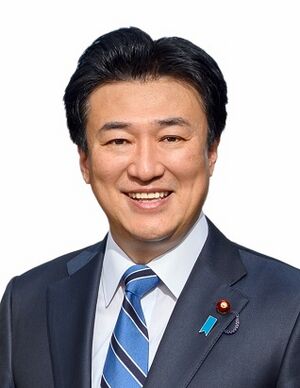Minister of Defense (Japan) facts for kids
Quick facts for kids Minister of Defense |
|
|---|---|

Standard of the Minister of Defense
|
|
| Ministry of Defense | |
| Style | His Excellency |
| Member of | Cabinet National Security Council Defense Council |
| Reports to | The Prime Minister |
| Appointer | The Prime Minister
subject to formal attestation by the Emperor
|
| Precursor | Director General of the Defense Agency |
| Formation | 9 January 2007 |
| First holder | Fumio Kyuma |
| Deputy | State Minister of Defense |
| Salary | ¥20,916,000 |
The Minister of Defense (防衛大臣, Bōei Daijin) is a very important job in Japan. This person is part of the Japanese Cabinet, which is like the main team of leaders who help run the country. The Minister of Defense is also in charge of the Ministry of Defense. This ministry oversees Japan's armed forces, called the Japan Self-Defense Forces.
The Minister of Defense helps protect Japan. Their power over the military is second only to the Prime Minister of Japan. The Prime Minister is the top commander of the armed forces. The Prime Minister chooses the Minister of Defense. This minister is also a member of the National Security Council, which makes big decisions about Japan's safety. The current Minister of Defense is Minoru Kihara. He started his job on September 13, 2023.
Contents
How the Ministry of Defense Started
On December 26, 2007, the Government of Japan decided to change its Defense Agency into the Ministry of Defense. This was a big step for Japan's military future. Japan's defense plan is based on a "Basic Policy for National Defense" from May 1957. This policy helps Japan prevent attacks from outside enemies.
The Japanese government officially created the Ministry of Defense with a special event. The Prime Minister at the time, Shinzō Abe, and the new Minister of Defense, Fumio Kyuma, were there. This change was part of Prime Minister Abe's plan to make the Japan Self-Defense Forces (JSDF) stronger.
The idea to upgrade the Defense Agency was approved by Japan's parliament. The House of Representatives (the lower house) approved it in November 2007. The House of Councillors (the upper house) approved it in mid-December 2007. Minister Kyuma even gave a speech after the bill was approved.
With the Defense Agency becoming the Ministry of Defense, the JSDF got new duties. These included helping with international operations, disaster relief, and peacekeeping missions in other countries.
In 2019, Taro Kono became the first well-known politician to lead the Ministry of Defense. He was seen as a possible future Prime Minister. He had strong support from his political party.
Who is in Charge of Japan's Defense?
The person in charge of the Japan Self-Defense Forces (JSDF) is the Prime Minister. Even though the Prime Minister is the top leader, they are not a uniformed military officer. The Emperor of Japan is the head of the country, but he does not have political or military power over the JSDF. That power belongs to the Prime Minister. However, the Emperor does formally appoint the Prime Minister to their job.
The Minister of Defense is responsible for organizing the military. They also help create Japan's national security plans. The Ministry of Finance helps prepare the budget for defense. The Ministry of Defense also suggests new laws to the National Diet, which is Japan's parliament.
The Minister of Defense gets advice from the Chief of Staff, Joint Staff. This person helps with all matters related to the duties of the Japan Self-Defense Forces.
Ministers of Defense (2007–Present)
Here is a list of the people who have served as the Minister of Defense since the ministry was created in 2007.
| Minister of Defense | Time in Office | Prime Minister | ||||||
|---|---|---|---|---|---|---|---|---|
| # | Picture | Name | Started Job | Left Job | How Long They Served | |||
| 1 |  |
Fumio Kyuma | January 9, 2007 | July 4, 2007 | 176 days | Shinzō Abe | ||
| 2 | 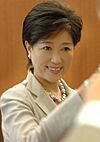 |
Yuriko Koike | July 4, 2007 | August 27, 2007 | 54 days | |||
| 3 | 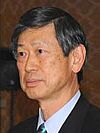 |
Masahiko Kōmura | August 27, 2007 | September 26, 2007 | 30 days | |||
| 4 | 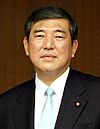 |
Shigeru Ishiba | September 26, 2007 | August 2, 2008 | 311 days | Yasuo Fukuda | ||
| 5 | 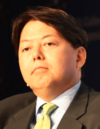 |
Yoshimasa Hayashi | August 2, 2008 | September 24, 2008 | 53 days | |||
| 6 |  |
Yasukazu Hamada | September 24, 2008 | September 16, 2009 | 357 days | Taro Aso | ||
| 7 | 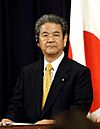 |
Toshimi Kitazawa | September 16, 2009 | September 2, 2011 | 1 year, 351 days | Yukio Hatoyama | ||
| Naoto Kan | ||||||||
| 8 | 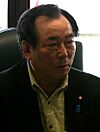 |
Yasuo Ichikawa | September 2, 2011 | January 13, 2012 | 133 days | Yoshihiko Noda | ||
| 9 | 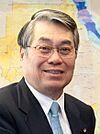 |
Naoki Tanaka | January 13, 2012 | June 4, 2012 | 143 days | |||
| 10 | 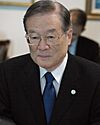 |
Satoshi Morimoto | June 4, 2012 | December 26, 2012 | 205 days | |||
| 11 | 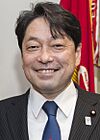 |
Itsunori Onodera | December 26, 2012 | September 3, 2014 | 1 year, 251 days | Shinzō Abe | ||
| 12 | 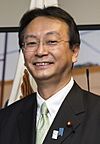 |
Akinori Eto | September 3, 2014 | December 24, 2014 | 112 days | |||
| 13 |  |
Gen Nakatani | December 24, 2014 | August 3, 2016 | 1 year, 223 days | |||
| 14 |  |
Tomomi Inada | August 3, 2016 | July 28, 2017 | 359 days | |||
| – | 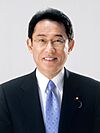 |
Fumio Kishida (Acting) |
July 28, 2017 | August 3, 2017 | 6 days | |||
| 15 (11) |
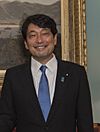 |
Itsunori Onodera | August 3, 2017 | October 2, 2018 | 1 year, 60 days | |||
| 16 | 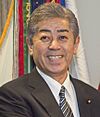 |
Takeshi Iwaya | October 2, 2018 | September 11, 2019 | 344 days | |||
| 17 | 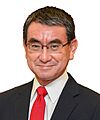 |
Tarō Kōno | September 11, 2019 | September 16, 2020 | 1 year, 5 days | |||
| 18 | 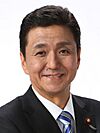 |
Nobuo Kishi | September 16, 2020 | August 10, 2022 | 1 year, 328 days | Yoshihide Suga | ||
| Fumio Kishida | ||||||||
| 19 (6) |
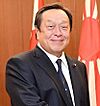 |
Yasukazu Hamada | August 10, 2022 | September 13, 2023 | 1 year, 34 days | |||
| 20 | 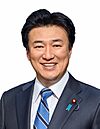 |
Minoru Kihara | September 13, 2023 | Incumbent | 2 years, 81 days | |||
Japan's Defense After World War II
After World War II ended, the old Japanese armed forces were stopped. US forces then helped manage Japan's defense. In the early 1950s, a group called the National Police Reserve was formed. It was led by Minister of State Takeo Ōhashi. Later, this group was renamed the National Safety Force. In 1952, the Coastal Safety Force was also created to protect Japan's waters.
Ministers with Military Experience
Japan's Constitution says that all members of the Cabinet, including the Minister of Defense, must be civilians. This means they should not be active military members. However, people who were in the military before becoming politicians can still be appointed as Minister of Defense.
Here are some Ministers of Defense who had military experience:
- Raizo Matsuno - served in the Imperial Japanese Navy during World War II.
- Yasuhiro Nakasone - served in the Imperial Japanese Navy during World War II.
- Sōsuke Uno - served in the Imperial Japanese Army during World War II.
- Soichiro Ito - served in the Imperial Japanese Army during World War II.
- Shin Kanemaru - served briefly in the Kwantung Army.
- Satoshi Morimoto - served in the Japan Air Self-Defense Force.
- Gen Nakatani - served in the Japan Ground Self-Defense Force.
See also
- Ministers of the Army of Japan
- Ministers of the Navy of Japan


